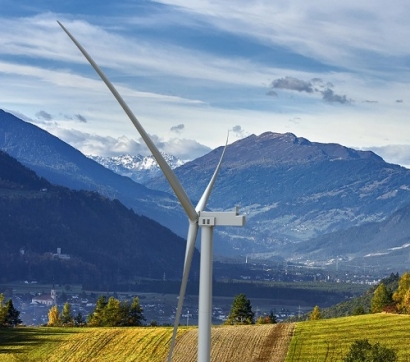
According to the company, Cypress has increased efficiency in serviceability, improved logistics and siting potential, and ultimately provides more value for customers. It is designed to scale over time, enabling GE to offer a wider array of power ratings and hub heights to meet customer needs throughout the 5MW range. The platform also offers up to a 50 percent increase in AEP over the life of the platform versus GE’s 3MW turbines. It is the second major technology platform launch of the year for GE, which introduced the Haliade-X offshore turbine platform in March.
The Cypress platform, which also includes the 4.8-158, will be powered by a two-piece blade design, enabling blades to be manufactured at longer lengths and improving logistics to offer more siting options. Longer blades improve AEP and help drive down the Levelized Cost of Electricity (LCOE), and the proprietary design will allow these larger turbines to be installed in locations that were previously inaccessible. It features blade tips that offer customers greater flexibility to address site wind conditions and requirements.
The blades were developed through the longtime partnership between GE’s Onshore Wind business, GE’s Global Research Center and GE’s LM Wind Power.
The Cypress platform, designed for IEC (S) wind speeds, leverages the best of GE's 2MW and 3MW turbines – including the proven DFIG-doubly-fed induction generator – and a robust drivetrain architecture. The machine is specifically designed for services, with enhancements to help with facilitating up-tower repairs and troubleshooting with its up-tower electrical system, while also pushing the limits of traditional reliability levels on major components, through increased systems level hardware testing and more robust manufacturing processes. This combination of planned, condition-based and predictive services will help to ensure more reliability, uptime and production while ultimately lowering lifecycle costs for the customer.
Duncan Berry, CEO of GE’s LM Wind Power said, “Our team used a disruptive design methodology and customer feedback to re-examine our entire design and manufacturing process. By looking at this blade in an entirely new way, we achieved a technology breakthrough that will allow us to bring the new blades to market even faster for our customers.”

